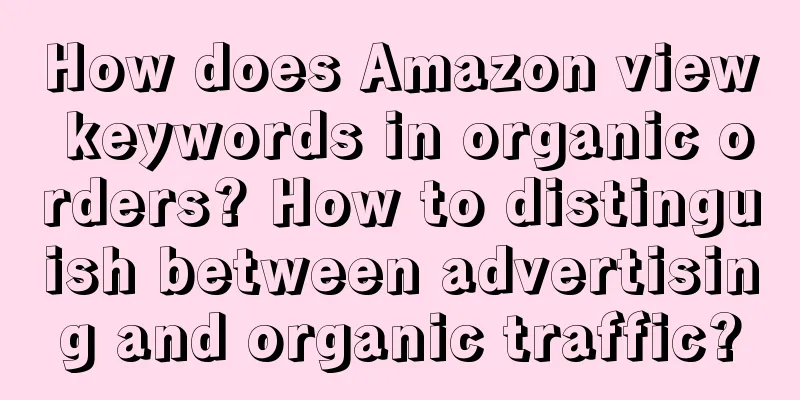How to spend brand money wisely

In the eyes of many people, brand is equal to brand advertising, just like the light boxes, TCVs, and splash pages we see at airports, subways, TVs, elevators, and on mobile phones. Therefore, entrepreneurs believe that branding requires spending money, and spending a lot of money. In my opinion, the first half of the sentence may be correct. Brand building definitely requires a budget. It takes time, energy, and money to let target customers see, understand, like, and love your brand. The second half of the sentence, spending a lot of money, is not necessarily true. Spending money wisely and where it counts can bring business returns. Even a multiple increase in turnover far exceeds the linear growth brought about by improved operating efficiency. Brand is a valuable investment. If you don’t invest, you will miss the opportunity; if you invest in the wrong thing, you will suffer heavy losses. So how should you spend the money on the brand? Where should you spend it? The easiest way is to sort by maturity. Taking technology companies as an example, the focus of brand investment, content, channels and methods of communication are different for start-up, growth and mature companies. (Although this classification is not very rigorous and there is no specific definition of turnover, there are some commonalities in brand building for companies at different stages) 1. Start-upThe creation of a new business is often due to an idea, a patented technology (invention) or a passion for a product/industry. At this stage, it is necessary to attract attention. No matter what the occasion, it is most important to make the product visible. For example, a website and a PPT, including company and product introductions, brand stories, management team, customer/expert endorsements, etc. Some companies have registered trademarks and started to speak out in the media. In the promotional content, modestly using the following words will leave a good impression on potential customers. "You may need (demand), we can provide (product/solution)" Why would customers try the products of an unknown company? Perhaps one of the reasons is that it can solve a certain need and promises to provide comprehensive services. But saying this may not be differentiated, it is just an introduction. For example, "Company A uses AI to build websites. Just answer a few questions to generate a professional website for you. Copywriting, pictures, and layout are all done at once." Although it looks like a good product, can you change the name of company B, C, or D (in the same industry) in front? It is difficult to be different in the start-up stage. Large companies have probably thought of all the ideas that can be thought of. If you promote yourself as "I am the leader of the xxx industry, and I want to become China's xxx", isn't it a bit self-satisfied? Even if you impress yourself, customers will not believe it. They will think, "You are bragging, I don't want to be a guinea pig. Besides, what does it have to do with me if you become a leader?" Therefore, start-ups must first serve their customers well. Even if you repeatedly guarantee how good the product is and how advanced the technology is, it cannot compare to the good reputation of customers. In addition, you can spend some money to hire a good design and copywriting company . A well-designed logo, website, and brand story can often impress new customers. ( Of course, you can also ask AI for help, but being proficient in using tools and having a good aesthetic sense are not something every startup team is good at.) At this stage, the value of the brand lies in increasing customer trust. 2. Growth stageAfter going through the test of survival, the company has gradually accumulated some customers and has also become well-known in the industry. At this time, the brand communication can emphasize its own strength. For example, "XXX company chooses to cooperate with...", and openly say "who we are and what we provide" . Of course, there are a large number of growing companies, and the competition is the most intense. If you want to stand out, you need to highlight your uniqueness. Is it the leading product performance? Is it the simple and elegant appearance? Is it the ability to save customers a lot of time and cost? ... From the perspective of communication, a high-end official website (with a landing page), exposure in professional media, self-media operations, etc. should be laid out. Provide sales toolkits to the front line in a timely manner, and organize some marketing activities and exhibitions that can bring business leads. If it is not for listing or other purposes, brand advertising for the general public is meaningless . Enterprises in the growth stage have not yet reached the stage of covering a large and comprehensive customer base. And when it comes to social responsibility and sustainable development, it seems big but empty. Focus on providing value to customers, whether it is improving efficiency, reducing costs, reducing risks, or expanding markets... During the growth stage, if the company wants to develop rapidly, it can appropriately invite external brand consultants or marketing coaches to help sort out the strategic path for brand development. 3. MaturityThe company has reached a certain scale, has developed steadily, and has even expanded its business scope to the world. At this time, you can refer to various classic books for marketing. The theories of "positioning" and "marketing management" are meaningful for customers at this stage. For example, for mature companies, they can claim that they represent the category/track, such as " I am a leader in the field of XXX." The confidence comes from the fact that they have accumulated a large number of customers and have data to support their claim to be the leader. This is not an exaggeration, but rather highlights their strength, attracting more customers and partners to establish connections. The forms of brand promotion for mature companies are more diverse, and through campaign planning, scattered activities can be strung together into an influential series of activities. In addition, the media must also achieve full-area promotion. For example, professional media and self-media platforms must be laid out. In addition, media public relations, experts, and research institutions must communicate and interact more. Mature companies generally have long-term strategic planning and grand visions. Different companies also need to reasonably allocate the investment ratio between brand promotion and business opportunity acquisition according to the industry they are in and the market potential. For example, if a large number of new customers are needed, it is appropriate to increase investment in business opportunities; if you want to expand the market overseas, you need to increase investment in branding... A strong brand will give customers more trust and save a lot of time comparing options, which is more likely to lead to higher profits. Large companies can invite marketing strategies and execution agencies to demonstrate their expertise in campaign creativity and event operations to improve organizational efficiency. In summary, the focus of brand building varies depending on the stage of the company, and the amount of money invested, time, and even external forces used are also different. The brand manager should comprehensively consider the brand investment and the value brought by quantification based on the industry and business situation of the company . I hope the above can inspire you. Author: Hanni Source public account: Time Notebook (ID: 1089517) |
Recommend
Do I need to re-register if I fail the Amazon audit? Why?
Now more and more merchants are opening stores on ...
Can I sell cosmetics on Amazon? What do I need to provide?
The sales of products such as cosmetics are still ...
60 cents a cup, it's selling like crazy on Douyin
In the coffee circle, young people fall in love wi...
A new way to record your online life——ilog
How do you record your colorful life? It's vlo...
How to verify Amazon bank account? Process Introduction
Recently, many Amazon sellers have received accoun...
How should a novice Amazon seller operate? Is it easy to operate an Amazon store?
For novice sellers, how to successfully operate a ...
Big changes to the entertainment live streaming policy on video accounts? The commission is reduced, and the tasks are difficult to complete...
The video account entertainment live broadcast pol...
What payment methods does Wish have? What are the payment standards?
Wish cross-border e-commerce platform has improved...
Xiaohongshu notes have low traffic? 5 ways to troubleshoot, 24 types of violations or traffic restrictions, quickly save your notes
What should you do if you encounter a violation of...
What should a new Amazon seller do? Operational strategies and suggestions
In the modern e-commerce market, Amazon has become...
How to open a store on the Wish platform? What preparations should be made before opening a store?
As a world-renowned e-commerce platform, Wish prov...
Can Amazon Middle East do self-delivery? How to do it?
Amazon Middle East Station supports Amazon FBA and...
Will Amazon keywords be associated in the same way? What is the impact of association?
After opening a store on Amazon, you may choose th...
Lao Xiang Ji publishes its dish traceability report. Isn’t it afraid that its peers will copy it?
This article delves into the strategic intentions ...
Where can I find Amazon disposal fees? How are they calculated?
Merchants who open stores on Amazon know that ther...









